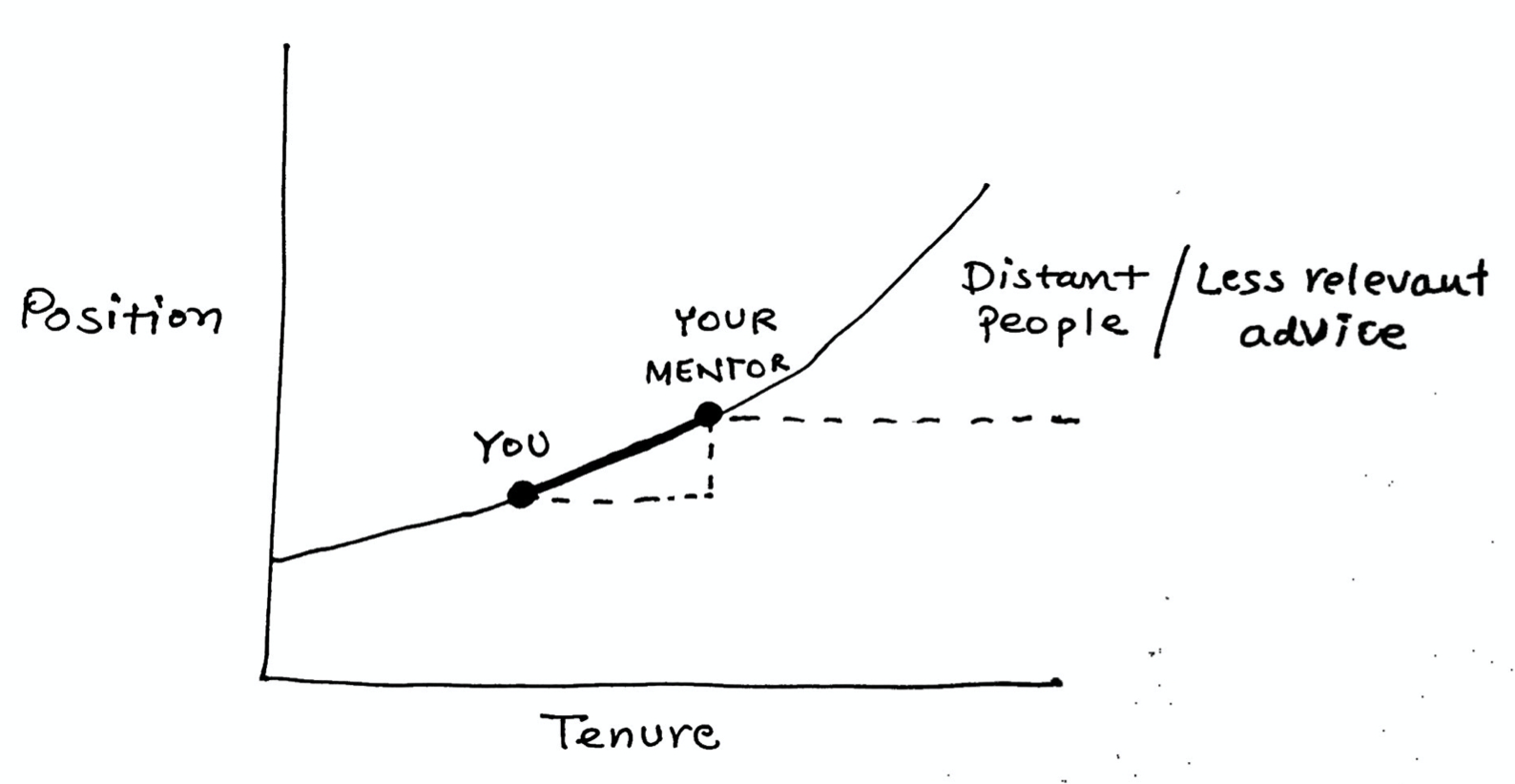Small Slope Mentorship
Mentorship is an interesting privilege in life and career. If engaged at the right phase, it can do wonders in contributing to your growth, and can then even provide you the necessary solace in your moments of despair.
Good mentorship can help you handle your highs and lows very well.
I say that mentorship is a privilege because when you have it, it almost feels like an unfair advantage. It’s not though and it is possible to seek out a good mentor by looking the right way.
I have a theory for who makes a good mentor in today’s fast-paced professional and personal lives we live. Let’s dive in.
Mentorship versus coaching
Mentorship is not a temporary assignment.
- Mentorship: Long term, perspective-driven, non-transactional
- Coaching: Short term, tactical and goal-based, transactional
Mentorship is a relationship. The more you invest in it, the more you can get out of it.
So how do you seek mentorship?
The small slope
My theory for finding a great mentor is to look for the person who is 4-5 years ahead of you professionally. Not 10-15 years, but 4-5 years.
A small slope mentor: Someone just ahead of you professionally who possesses an advanced perspective and a set of experiences you can learn from and apply readily.

Here are 4 reasons why this window is the ideal cohort to seek a mentor from:
-
The small slope cohort is relatively accessible to you and you don’t have to wait till you have a big enough network.
-
You want someone who has recently lived through the phase you are in right now for the learnings & experiences to be fresh in their mind.
-
The small slope ensures the age/experience delta between you and them is close enough to be relevant and yet significant enough to be meaningful, mature and perspective-broadening.
-
The small slope ensures that the mentor is also actively working and stands to gain from your observations and insights, compared to someone older who may be toward the sunset of their career or retired – this point explains why good mentorship lasts years because both involved parties are gaining along that small slope.
Does this mean the people further from you in the slope are irrelevant? Certainly not.
Rule of thumb
For great timeless advice that is generic and widely applicable, you look to old experienced wisdom.
For advice that is very contextual, evolving and relevant in the moment, you look to a small slope mentor.
💎 How to look for a mentor
Instead of searching for a mentor, identify one.
There’s a subtle difference in searching vs identifying – chances are that you’re already ‘being mentored’ by people around you, you just haven’t been able to discern this mentorship.
Here’s a non-exhaustive list of traits these mentors exhibit that can help you identify them.
Watch out for:
- Someone who’s not on your same career ladder (maybe a PM or an engineer if you’re a designer) who always gives you an outside perspective that changes the way you think about and do your job
- Someone who appreciates your way of thinking and analyzing situations, and often learns from you and appreciates you for it
- Someone who forces you to think but doesn’t give you an answer, someone who chooses discussion over decision
- Someone who forces you to think objectively and reflect internally instead of looking for externalities to blame
- Someone who encourages conflicting thoughts, points of views and doesn’t judge you for holding a different opinion
- Someone who doesn’t need an incentive to help you
- Someone who not only has interesting outlook about work but also about family, travel, food and just life in general
We all have people around us who tick a few points off from this list – if you do, keep an eye on their impact on you and your work and keep them close.
Finally, I hope this explains why it’s hard to time-bind mentorship into a formal program. It’s a request I often get but one that is almost impossible to fulfil in that format.
The success of mentorship is predicated on the involved parties investing time in each other. When they do, the bond only grows stronger and deeper over time and you go on to appreciate their peripheral presence in your life and career. Their impact then is immeasurable.